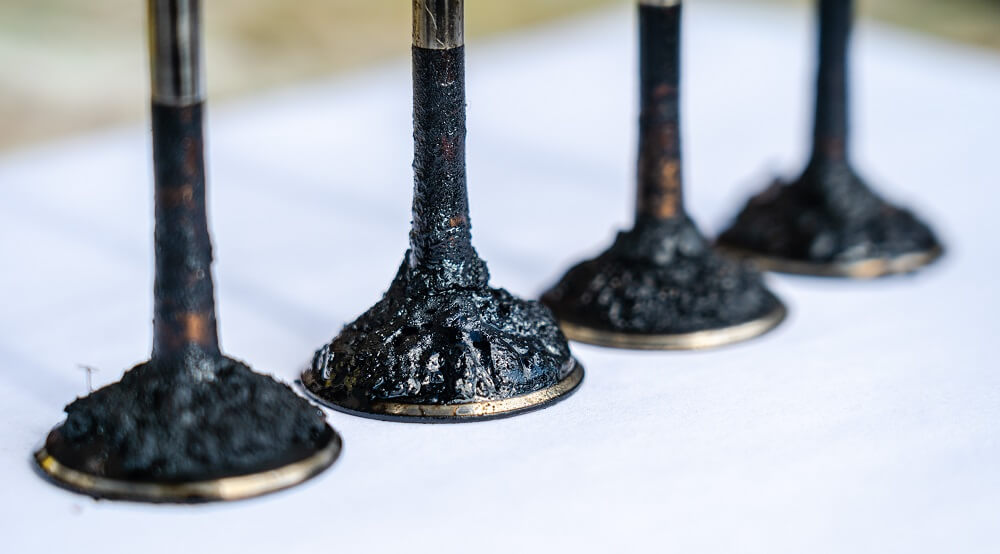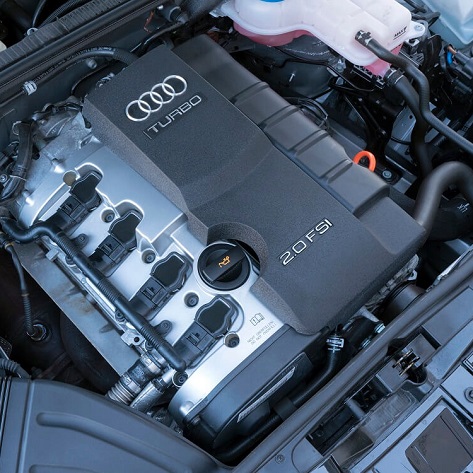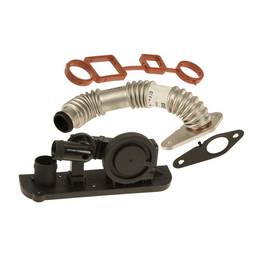The Audi 2.0 TFSI engine is a pretty popular. VAG Group has used it a number of different vehicles over the years, with lots of success. From its first iteration, It was capable of sending between 150 and 250 hp to the wheels, depending on the model of the engine.
This entire line of engines was invented to fill the gap left behind by the likes of 1.8T that was nearing the end of its service cycle. The new design had massive shoes to fill in terms of power delivery and reliability. Nearly 2 decades later, we can safely say that it did a good job. However, this accomplishment was far from a walk in the park.

Audi 2.0 TFSI – A Brief History
Before the Audi 2.0 TFSI, an extremely popular choice when it comes to engines was the 1.8T. It was used from 1999 until 2005 in the Audi TT Quattro. It’s also been used in a variety of VW vehicles. After the incredible success of the 1.8T, a similar, more powerful engine was introduced – the 2.0 TFSI EA113.
TFSI stands for “Turbo Fuel Stratified Injection”. What’s special about this engine is that it was turbocharged, thus providing quick response and higher power output while reducing emissions, and providing better fuel economy. It was the first-ever engine to be turbocharged with direct injection.

The first version of this motor was introduced in 2004 and represented an upgrade of the company’s 2.0 FSI engine. The main difference was the addition of a turbocharger. There were a couple of changes to the engine itself such as using the cast iron cylinder block to replace the aluminum block of the original FSI engine. Furthermore, the 16-valve twin-cam cylinder head featured all new camshafts, valves, and reinforced valve springs.
To say that VAG had good success with this design would be an understatement. The Audi 2.0 TFSI engine was awarded year after year as the best two-liter engine, specifically, every year from 2005 to 2009.
In 2007, a new generation of this engine was introduced, with the code EA888. It was designed for the global market and was also amongst Audi’s most awarded engines. With a couple of changes, this engine is still used in many Audi/VW models.
Available Versions
There were a couple of versions of the Audi 2.0 TFSI engine. It wasn’t an Audi exclusive engine, although it was designed by them. A total of 11 versions of the EA113 were made, two of which made it to the US market. These included engine codes AXX, BWA, BWE, and BPY that made 200 hp and 207 lb-ft of torque.
They were included in Audi A4 B7, Audi A3 8P, Audi TT, VW Golf Mk5 GTI, and VW Jetta Mk5 GLI. The second version of the Audi 2.0 TFSI engine had the code CDL and offered a power output between 220 hp and 265 hp, with 251-258 lb-ft of torque, depending on the application. It was included in cars such as Volkswagen Golf MKVI GTI Edition 35, Audi S3 (8P), and Golf R.
The newer Audi 2.0 TFSI EA888 engines, were made in 19 versions, two of which also made it to the US market. The engine codes for the US version of the Audi 2.0 TFSI engine were CCTA/CBFA which made 200 hp and 207 lb-ft of torque, and CYFB which made 292 hp and 280 lb-ft of torque. The cars that have this type of engine include the VW Golf Mk5 GTI, VW Golf Mk6 GTI, Audi Q3, VW Jetta Mk5 & Mk6, and Audi A3 (8P).
Is 2.0 TFSI a Good Engine?

No matter how good an engine is, all of them develop one or more issues as they mature. The same goes for Audi 2.0 TFSI. Was it the perfect engine when it first came out? Not really. There was a serious issue with oil consumption, which was so widespread that Audi had to step in.
However, that doesn’t change the fact that this particular motor is one of the best to come from Audi. At the end of the day, deciding whether an engine is good or bad mostly comes down to maintenance and maintenance history. If the engine was cared for, it will most likely run problem-free. On the other hands, these motors are sensitive to poor maintenance, which is guaranteed to show one way or another.
TFSI vs TSI – What’s the Difference?
Although the TFSI and TSI engines look visually very much alike, the main difference is that the TSI is a newer version of the TFSI engine. Both are turbocharged, but some of the flaws from the TFSI were resolved.
When it comes to the differences, they include the following:
- EA113 versions of both TSI (yep, there’s an EA113 TSI code CRZA out there) and TFSI feature belt driven camshafts, while the newer EA 888 TSI/TFSI engines feature chain driven camshafts
- Upgraded high-pressure fuel pump design
- Lowered compression ratio (9.6:1 on the TSI engine)
- Upgraded PCV system (was a common issue on the Audi 2.0 TFSI)
- Relocated dipstick and oil filter (the easiest way to tell them apart)
Both the TFSI and TSI engines have their flaws. With the upgraded and newer TSI engines, some of the known issues have been fixed, but there are still a few things that the new block hasn’t solved.
Audi 2.0 TFSI Known Issues
All engines have their common issues. Some have more issues, some have fewer, but the truth is that even premium car brands can make mistakes. Here’s a list of some of the most common issues reported on the 2.0 TFSI engine.
Ignition Coil Overheating
Ignition coil failure seems to be a common issue across the entire TFSI/TSI range of engines. Most of it is attributed to overheating issues caused by other engine problems. However, sometimes the coils fail because the spark plug well seals fail, thus allowing engine oil to seep down the bore.
Audi has introduced an updated ignition coil design that now features sheathing, which has taken care of many of the issues. If you’re having problems with your ignition coils, make sure to buy the updated version made by a prominent brand such as Bosch or similar. There are also R8 Red Top ignition coils, which are a great alternative to the stock design.
Excessive Oil Consumption
One of the biggest and most notable flaws of the Audi 2.0 TFSI engine is the excessive oil consumption. Even with proper maintenance, some of these engines will go through a quart of engine oil in 1000 miles.
This is mainly caused by faulty piston rings that would require replacement to fix. Some cars got so bad that Audi was forced to push a technical bulletin on the matter.
Ignition Coil Connector Failure
If you know VW/Audi, you probably know that their electrical connectors are not the best, to put it lightly. Most of them can be replaced, but when an ignition coil connector fails, that one can be tricky to solve. You’ll usually find them with broken tabs, or you might end up with the weather stripping and wire harness in your hand, while the rest of the connector is still sitting on the ignition coil.
If you notice broken connectors on your Audi, that doesn’t necessarily mean that someone manhandled them in the past. More often than not they just break on their own.
Carbon Buildup On The Intake Valves

The 2.0 TFSI engines were the first VAG design to utilize direct fuel injection instead of the usual port injections. With port injected engines, the fuel is introduced to the intake manifold under pressure. It then mixes with air and hits the intake valves right as they open.
A byproduct of port fuel injection is the fact that intake valves get washed by fuel as they open, which keeps them clean.
With direct fuel injection, the intake valves are left without that cleaning effect. Over time, carbon starts to build on them, which can cause them to gunk up. This isn’t unique to Audi’s TFSI or TSI engines. Almost all early generation GDI engines suffer from this same issue. That being said, you should have your intake cleaned from time to time to prevent any excess buildup.
Cam Follower Failure
The flat tappet cam follower failure is one of the most notorious issues on the Audi 2.0 TFSI engines. Once the cam follower goes, it will drag the cam lobe with it. The HPFP will be affected as well, at which point you’re looking at a decent amount of work.
Newer TSI designs use a roller cam follower as well as a quad lobe that is much less prone to wear.
PCV Valve Issue
The PCV valve issue is more common on the older EA113 Audi 2.0 TFSI engines. When the PCV valve fails, you’ll notice a lack of power and loss of boost pressure. To put it in simpler terms, your Audi won’t accelerate as well as it used to.
Aside from these symptoms, the PCV failing would often cause an oil leak that could get pretty severe if given enough time. This entire problem became so severe that Audi had to completely reengineer the PCV design, which has greatly reduced complaints on this matter.
Tuning Potential of an Audi 2.0 TFSI Engine

The Audi 2.0 TFSI is one of the most tunable engines out there. Its ECU is based on the same platform as the ECU found in older 1.8T engines, and the 2.0 TFSI engine came with two different turbos. The K03 and the K04.
Depending on how fast you want to go and how much you want to invest in tuning the Audi 2.0 TFSI engine, you can get a total power output of up to 550 hp and 550 lb-ft of torque. These numbers also depend on the engine code, turbo, and part upgrades.
To stay on the safe side, you should fix any issues found on the car before attempting to increase power. Check out some of the common issues found on these engines and make sure everything is in prime condition before attempting to tune your car.
The first stage is ECU remapping. Without any hardware changes on the car, an ECU remap can increase the power and torque up to around 15%. However, if you want more power from your car, you’ll need to invest in an intercooler, aftermarket induction kit, sports cat, and full performance exhaust. Aside from the power difference, you’ll also have a much better-sounding car.
There are other upgrades you can do to your car, but they require hybrid turbo upgrades, injector upgrades, stage 3 ECU tuning, and more.
Is Audi 2.0 TFSI a Good Buy in 2022?
All things being equal, the Audi 2.0 TFSI engine is a great one and is definitely worth getting in 2022. It provides great power output, torque, and fuel economy. Like any other engine, it has its flaws, but with proper maintenance and service history, you can rely on it and enjoy driving.
We’ve mentioned some of the most common issues with the Audi 2.0 TFSI engine, and most are easily fixed. The only thing you need to do is check the car before buying and regularly replace parts when they’re up for maintenance.
Use Quality Parts For Your Audi
By using high-quality and OEM parts, you’ll have a reliable car that will give you more than enough power for any occasion. That’s why here at eEuroparts, we never compromise when it comes to quality and only offer premium Genuine, OEM and aftermarket parts for European vehicles.
You’ll find parts that perfectly fit any version of the Audi 2.0 TFSI engine, but also any other category of parts you need. You’ll find engine oils, filters, fluids, shocks, transmission parts, suspension parts or anything in between. Check out our shop for more info!















This engine can be Garbage~ MY 2016 with regular OEM maintainance blew the bottom of one piston apart. $12,000 later…..